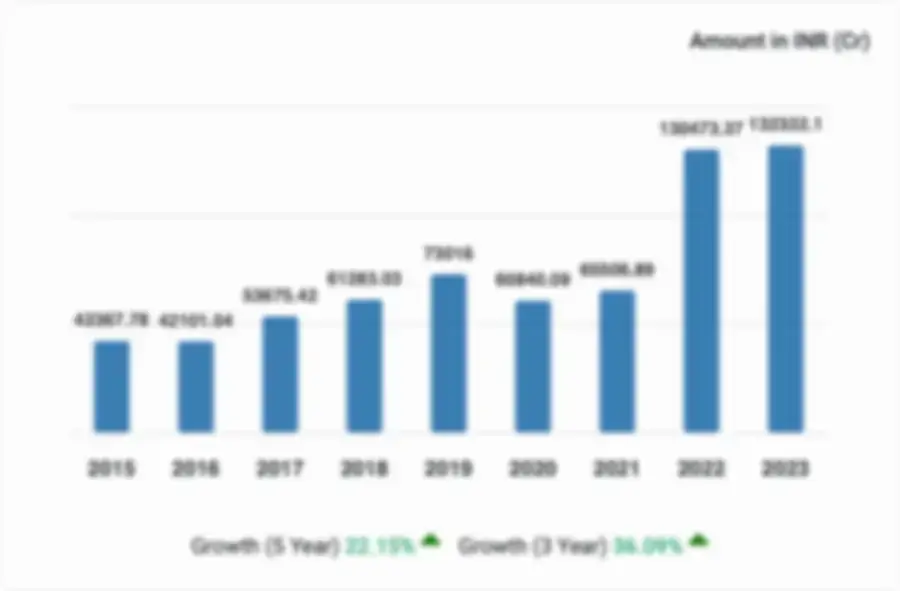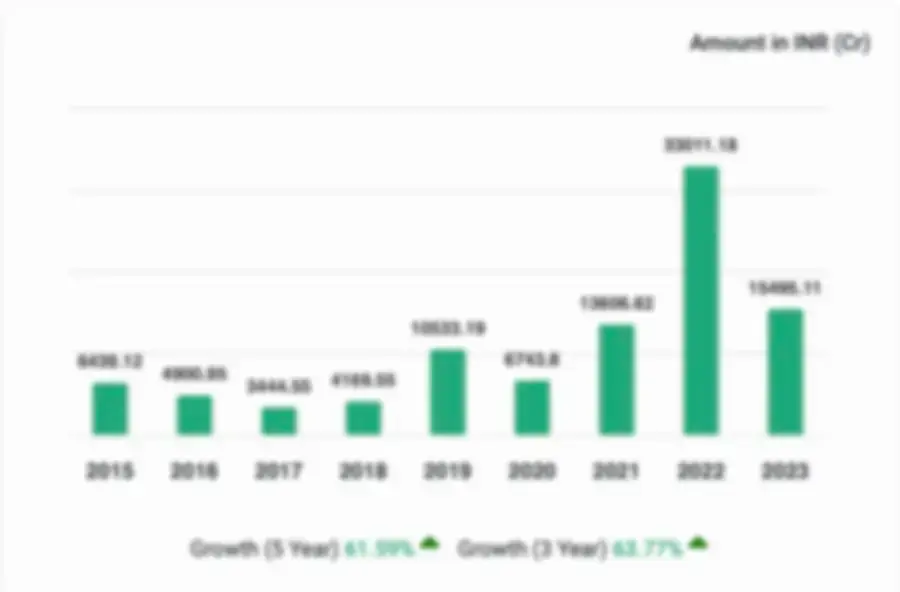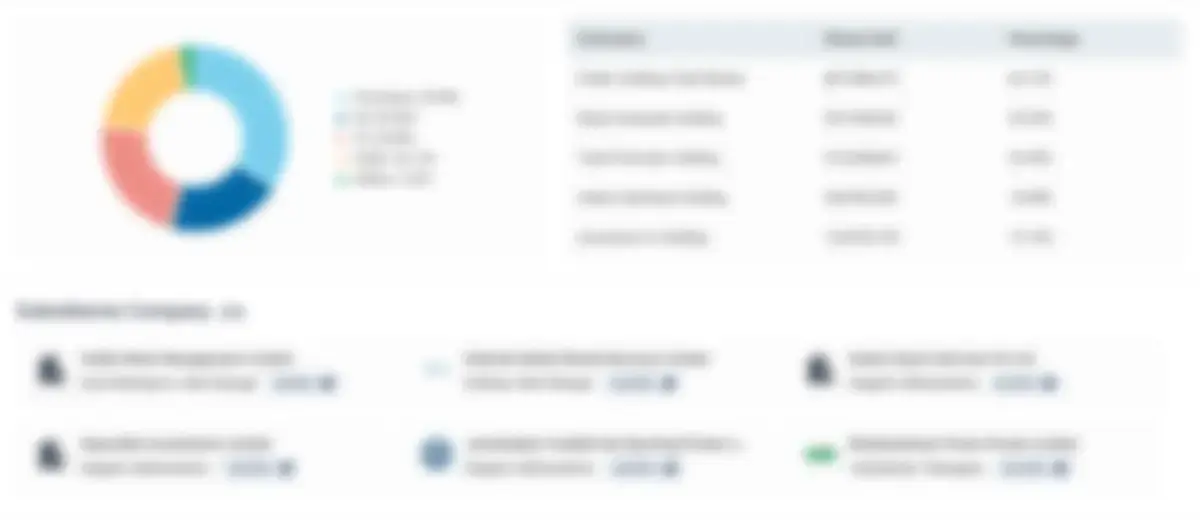

K K Milk Fresh India Profile
Key Indicators
- Authorised Capital ₹ 105.00 Cr
- Paid Up Capital ₹ 101.75 Cr
- Company Age 15 Year, 4 Months
- Last Filing with ROC 31 Mar 2016
- Open Charges ₹ 346.74 Cr
- Satisfied Charges ₹ 2.15 M
- Revenue Growth 952.31%
- Profit Growth -15551.93%
- Ebitda 3443.87%
- Net Worth 29.99%
- Total Assets 71.37%
About K K Milk Fresh India
Company Details
- Location
Kanpur Dehat, Uttar Pradesh, India
- Telephone
+91-XXXXXXXXXX
- Email Address
- Website
- Social Media
Corporate Identity Details
- CIN/LLPIN
U01403UP2010PLC039300
- Company No.
039300
- Company Classification
Public Limited Indian Non-Government Company
- Incorporation Date
20 Jan 2010
- Date of AGM
28 Sep 2016
- Date of Balance Sheet
31 Mar 2016
- Listing Status
Unlisted
- ROC Code
Roc Kanpur
Industry
What products or services does K K Milk Fresh India Limited offer?
K K Milk Fresh India Limited offers a wide range of products and services, including Butter, White Butter, Milk Powder, Skimmed Milk Powder, Milk & Dairy Products, Dairy Products, Whole Milk Powder.
Who are the key members and board of directors at K K Milk Fresh India?
Board Members (3)
| Name | Designation | Appointment Date | Status |
|---|---|---|---|
| Chand Kuchroo | Director | 20-Jan-2010 | Current |
| Visvanathan Sankaranarayana | Whole-Time Director | 20-Jan-2010 | Current |
| Nymphia Vishin | Director | Current |
Financial Performance of K K Milk Fresh India.
K K Milk Fresh India Limited, for the financial year ended 2016, experienced significant growth in revenue, with a 952.31% increase. The company also saw a substantial fall in profitability, with a 15551.93% decrease in profit. The company's net worth Soared by an impressive increase of 29.99%.


- Key Matrics
- Balance Sheet
- Profit and Loss
- Cash Flow
- Ratios
| Metrics |
| (FY 2022) | (FY 2021) | (FY 2020) | (FY 2019) | ||
|---|---|---|---|---|---|---|---|
| Total Revenue |
| ||||||
| Revenue from Operations |
| ||||||
| Total Assets |
| ||||||
| Profit or Loss |
| ||||||
| Net Worth |
| ||||||
| EBITDA |
|
What is the Ownership and Shareholding Structure of K K Milk Fresh India?
In 2016, K K Milk Fresh India had a promoter holding of 92.02% and a public holding of 7.98%. Access key insights, ownership, including shareholding patterns, funding, foreign investors, KMP remuneration, group structure, and overseas investments.

Related Corporates (Common Directorship)
 Samprash Foods Limited
Samprash Foods LimitedChand Kuchroo and Visvanathan Sankaranarayana are mutual person
 Ingenious Foods Private Limited
Ingenious Foods Private LimitedChand Kuchroo is a mutual person
 Noon Rasch Llp
Noon Rasch LlpNymphia Vishin is a mutual person
Charges (Loans)
₹346.74 Cr
₹0.22 Cr
Charges Breakdown by Lending Institutions
- Sbicap Trustee Company Limited : 240.00 Cr
- Union Bank Of India : 106.48 Cr
- Vijaya Bank : 0.26 Cr
Latest Charge Details
| Date | Lender | Amount | Status |
|---|---|---|---|
| 26 Nov 2015 | Sbicap Trustee Company Limited | ₹68.00 Cr | Open |
| 21 Jul 2015 | Union Bank Of India | ₹106.48 Cr | Open |
| 26 Jun 2015 | Vijaya Bank | ₹0.38 M | Open |
| 07 Jul 2014 | Sbicap Trustee Company Limited | ₹172.00 Cr | Open |
| 18 Oct 2013 | Vijaya Bank | ₹0.50 M | Open |
How Many Employees Work at K K Milk Fresh India?
K K Milk Fresh India has a workforce of 0 employees as of Apr 06, 2024. Unlock access to detailed historical data on individuals associated with the company, including employment records, contributions to the Employees' Provident Fund Organization (EPFO), and other related insights.

Deals i

Gain comprehensive insights into the Deals and Valuation data of K K Milk Fresh India, offering detailed information on various transactions, including security allotment data. Explore the intricate details of financial agreements, mergers, acquisitions, divestitures, and strategic partnerships that have shaped K K Milk Fresh India's trajectory.
Rating

Access the credit rating data, providing valuable insights into the company's creditworthiness and financial stability. Explore assessments from leading credit rating agencies, evaluating factors such as debt obligations, liquidity, profitability, and overall financial health.
Alerts

Stay informed about regulatory alerts and litigation involving and associated companies. Receive timely updates on legal proceedings, regulatory changes, and compliance issues that may impact the company's operations, reputation, and financial performance. Monitor litigation involving subsidiaries, joint ventures, and other affiliated entities to assess potential risks and liabilities.
Latest Updates, News, and FAQs on K K Milk Fresh India
Recent activity within the organization
- Annual General Meeting
K K Milk Fresh India Limited last Annual general meeting of members was held on 28 Sep 2016 as per latest MCA records.
- Charges
A charge registered on 23 Oct 2012 via Charge ID 10390442 with Union Bank Of India was fully satisfied on 10 Jun 2016.
- Charges
A charge registered on 23 Oct 2012 via Charge ID 10390525 with Union Bank Of India was fully satisfied on 10 Jun 2016.
- Balance Sheet
K K Milk Fresh India Limited has filed its annual Financial statements for the year ended 31 Mar 2016 with Roc Kanpur.
- Charges
A charge with Sbicap Trustee Company Limited of Rs. 68.00 Cr registered on 26 Nov 2015 with Charge ID 10604081 was modified on 27 Nov 2015.
- Charges
A charge with Sbicap Trustee Company Limited amounted to Rs. 68.00 Cr with Charge ID 10604081 was registered on 26 Nov 2015.
Recent News, Updates & Announcement
Frequently asked questions
What is the Incorporation or founding date of K K Milk Fresh India Limited?
K K Milk Fresh India Limited was incorporated on 20 Jan 2010.
What is authorized share capital and paid-up capital of K K Milk Fresh India Limited?
The authorized share capital of K K Milk Fresh India Limited is ₹ 105.00 Cr and paid-up capital is ₹ 101.75 Cr.
Who are the current board members & directors of K K Milk Fresh India Limited?
Currently 3 directors are associated with K K Milk Fresh India Limited.
- Chand Narian Kuchroo
- Visvanathan Sankaranarayana
- Nymphia Vishin
What is the registered address of K K Milk Fresh India Limited?
As per Ministry of Corporate Affairs (Mca), the registered address of K K Milk Fresh India Limited is 57 Milestone Nh-2 Village Kumbi, Tehsil-Akbarpur, Ramabai Nagar, Uttar Pradesh, India, 209206.
What is the corporate identification number (CIN) and company number of K K Milk Fresh India Limited?
The corporate identification number (CIN) of K K Milk Fresh India Limited is U01403UP2010PLC039300 and the company number is 039300 as per Ministry of Corporate Affairs (MCA).
What is the official website of K K Milk Fresh India Limited?
The Official website of K K Milk Fresh India Limited is https://www.kkmilk.com
What has been the recent revenue trend for K K Milk Fresh India Limited?
According to the financial reports for the fiscal year 2016, the revenue trend for K K Milk Fresh India Limited has risen by 952.31%.
What change has been observed in the net worth of K K Milk Fresh India Limited, and by what percentage?
The financial reports for the fiscal year 2016 indicates that The net worth of K K Milk Fresh India Limited has experienced an upsurge of 29.99%.
What are the total open charges for K K Milk Fresh India Limited?
As per the financial statements for fiscal Year 2016, The total open charges for K K Milk Fresh India Limited amount to ₹ 346.74 Cr.
When was the last Balance Sheet of K K Milk Fresh India Limited filed with the ROC?
The most recent Balance Sheet for K K Milk Fresh India Limited was filed with the ROC on 31 Mar 2016.
Search company & director profiles for free and gain access to critical business data.
- 3.1M+ Companies
- 15M+ Legal Cases
- 525K+ Credit Ratings
- 5.8M+ Directors & KMP
- 750K+ Regulatory Alerts
- 1.1M+ Companies' Financial Records
People also Viewed
 Farhat NajmiAdditional Director
Farhat NajmiAdditional DirectorSA
Sanjay AggarwalDirectorMK
Murtaza KhanDirectorVP
Vikram PandeyDirectorKK
Kaushal KumarDirectorAK
Ashok KumarDirectorKC
Kapil ChughDirectorAK
Akshar KuchrooDirector
Similar Companies Based on Dairy Products & Milk Processing
 Shri Dutt India Private Limited Kolkata, West Bengal, India
Shri Dutt India Private Limited Kolkata, West Bengal, India Nestle India Limited New Delhi, India
Nestle India Limited New Delhi, India Hatsun Agro Product Limited Chennai, Tamil Nadu, India
Hatsun Agro Product Limited Chennai, Tamil Nadu, India Dodla Dairy Limited Hyderabad, Telangana, India
Dodla Dairy Limited Hyderabad, Telangana, India Dharampal Satyapal Limited Delhi, India
Dharampal Satyapal Limited Delhi, India Haldiram Foods International Private Limited Gurugram, Haryana, India
Haldiram Foods International Private Limited Gurugram, Haryana, India Vrs Foods Limited Delhi, India
Vrs Foods Limited Delhi, India Indapur Dairy And Milk Products Limited Pune, Maharashtra, India
Indapur Dairy And Milk Products Limited Pune, Maharashtra, India

